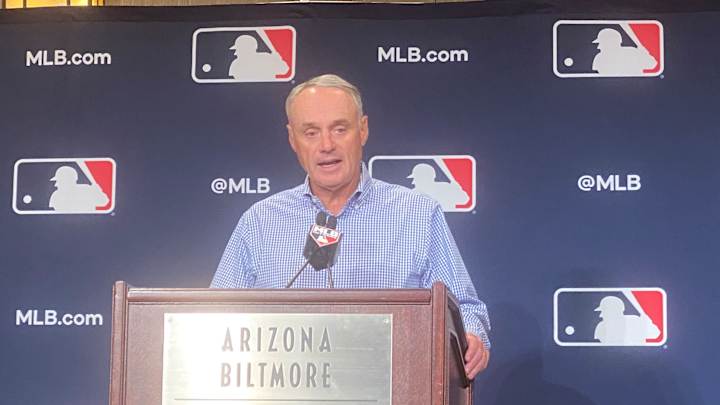MLB Issues Clarifications for New Rule Changes for 2023

In this story:
With the regular season fast approaching, one thing to watch will be how teams handle the new rules being implemented. After four weeks of Spring Training games and feedback from the players, Major League Baseball has made some slight tweaks with those new rules and sent clarification memos to all 30 teams. Jeff Passan of ESPN has the details.
Pitch Clock and Pace of Play
This is what we already know about how the pitch clock will be enforced:
- The pitcher has 15 seconds to throw a pitch with no one on, 20 seconds with runners on. He must also have thrown his final warm-up pitch of the inning with at least 30 seconds left on the timer. Failure to do so will result in the pitcher being charged a ball.
- The batter must be alert to the pitcher with at least eight seconds left on the pitch clock or be charged a strike.
The number of violations has already dropped from 2.03 in the first week of games to 1.03 this week, so the players are already making the adjustments to the new pace. The pitch timer has already reduced the average game time from 3 hours and 1 minute last spring to 2 hours and 36 minutes.
Additionally MLB clarified on when to start the timer:
- On a "brushback" pitch (fastballs up and in) or big swing that knocks equipment out of place (ex. batting helmet falls off the player's head), the home plate umpire can delay the start of the timer or waive it off if the timer is started too early.
- If the pitcher is away from the mound to participate or back up a play, the start of the 30-second timer will be delayed. The timer will restart when the pitcher is back on the infield grass after making a play or in fair territory after backing up a base.
- Leniency for catchers who end the previous inning on base or at-bat. This came up for the D-backs on February 27th, in which Carson Kelly made the final out of an inning. Joe Mantiply threw his final warm-up pitch with less than 30 seconds and was penalized a ball, along with Cubs batter Brennan Davis penalized a strike for not being alert to the pitcher in time. The D-backs coaching staff was unhappy about this result and met with MLB to discuss this.
- When a batter calls time and steps out of the box, they must indicate to the umpire they are ready to resume play. The umpire will then signal to start the timer. This was designed to prevent pitchers from holding the ball during the timeout then ambush hitters as soon as they step in the box, like Max Scherzer did against Riley Adams. If a batter uses a timeout and is replaced mid at-bat due to injury, the pinch-hitter is not given an additional timeout.
The league will also be evaluating bat boys/girls on their ability to quickly retrieve loose equipment to speed up the game. If their performance is considered substandard by the league, they may ask teams to replace them.
PitchCom
MLB is expected to allow the use of PitchCom for pitchers during the 2023 season. That is huge for the D-backs who will be starting a young catcher who is trying to learn a new staff in Gabriel Moreno. The pitchers can use the PitchCom system to call games from the mound, something Madison Bumgarner has already taken advantage of in both of his Cactus League starts.
If the PitchCom units malfunction midgame, the players must notify the umpires immediately so they can grant time and stop the clock. That onus will likely come down to the catcher, who is the closest player to the umpire. Additionally pitchers will not get more time if they forget to bring their PitchCom unit from the dugout to prevent them from exploiting this rule.
Shifts
The new rule on shifts requires all four infielders to play no further back than the edge of the infield dirt when a pitch is delivered. A batter can choose to either take the play or a ball for a shift violation. Teams are also allowed to challenge over the infield alignment, but are restricted to just the defender who first fielded the ball. For example, if a batter hit into a 6-4-3 double play, teams can only challenge if the shortstop was in proper alignment. That was designed to prevent teams from abusing challenges on key plays if any of the other infielders were in violation of the shift.
-36119d7a8ae794071d268ac48893b33f.PNG)
Michael McDermott is a writer for Arizona Diamondbacks On SI. Over the past 10 years, he's published thousands of articles on the Diamondbacks for SB Nation's AZ Snake Pit, Arizona Diamondbacks on SI, Burn City Sports, and FanSided's Venom Strikes. Most of his work includes game coverage, prospect coverage in the Arizona Fall League, and doing deep analytical dives on player performances. You can follow him on Twitter @MichaelMcDMLB
Follow MichaelMcDMLB